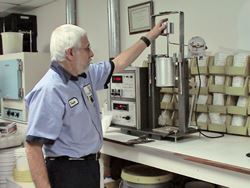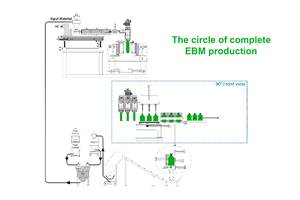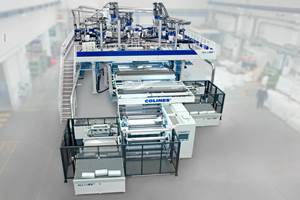Can't Succeed at Molding 'Commodities'? Best to 'Can' That Way of Thinking
So you think a can is a can is a can?
So you think a can is a can is a can? Then you probably never heard of Plastican. Since its founding in 1970 by the Clementi family in Leominster, Mass., Plastican has established a leading position in open-head pails with a line of products that demonstrate more innovation than one might expect in a so-called commodity processing operation.
Leominster is the largest of four Plastican plants and is believed to be the biggest open-head (injection molded) pail production facility in the U.S. It houses 27 presses from 700 to 2700 tons. Plastican runs two- and four-cavity molds that are designed and maintained in-house. The privately held company started in business making 4-gal food containers, but now furnishes a wide range of industrial containers to package paint, food, construction and janitorial supplies, and lots more. It molds lids as well.
In a business where price usually rules, Plastican has focused on a manufacturing and selling strategy in which product development is an interactive process between the molder and its customers. The end result is a pail engineered to give the customer an edge in the market.
“When is a pail not a pail? When it’s a solution,” says James Coletta, Plastican’s v.p. of sales and marketing. “Our process starts with a conversation with the customer. They are interested in top-line growth, especially after a recession. How can we help them?” he asks rhetorically. “Can we make them a product that’s easier to open and close, that’s more attractive, that fits better on the shelf, that saves them on shipping? It’s a consultative approach.”
Then technology steps in. Plastican makes proprietary modifications to its presses—notably in screw design—and considers its ability to mix, match, and blend various grades of HDPE and PP to be a particular advantage over its competitors, which include four or five national companies and a handful of one-plant operations that mostly compete locally. “Resin selection is a key part of what we offer,” notes Mark Keyes, director of technical services. “Our presses can blend materials with extremely different melt characteristics to tailor container performance to what the customer requires, whether it’s compression strength, environmental stress crack resistance, or post-consumer reclaim content.” In 2008, the molder opened an R&D center in Leominster to help in this effort.
In the last 15 months, Plastican brought out eight new products, including a rectangular 4.25-gal container of either HDPE or PP. Its excellent stacking strength permits 20% larger cube capacity than a like-sized round pail to cut shipping costs. Compared with typical square pails of the same size, this container also uses 10% less material. In response to increased customer demand, Plastican also added significant production capacity for its patented twist-and-lock containers. These pails open with a push of a tab and twist of the cover; twisting the lid locks it back in place.
“We’re doing much better than the industry overall,” says Coletta. “And part of the reason is that we continue to innovate. Innovation is especially critical in difficult times, because it helps us generate enthusiasm and excitement that will ultimately lead to new business.”
Related Content
Get Color Changes Right In Extrusion Blow Molding
Follow these best practices to minimize loss of time, material and labor during color changes in molding containers from bottles to jerrycans. The authors explore what this means for each step of the process, from raw-material infeed to handling and reprocessing tails and trim.
Read MoreFormulating LLDPE/LDPE Blends For Abuse–Resistant Blown Film
A new study shows how the type and amount of LDPE in blends with LLDPE affect the processing and strength/toughness properties of blown film. Data are shown for both LDPE-rich and LLDPE-rich blends.
Read More‘Monomaterial’ Trend in Packaging and Beyond Will Only Thrive
In terms of sustainability measures, monomaterial structures are already making good headway and will evolve even further.
Read MoreYoung Stretch-Film Processor Bets on Nanolayers
Going up against companies with as much as double its capacity, young stretch-film processor Zummit believes that new technology — notably 59-nanolayer films — will give it a competitive edge.
Read MoreRead Next
Lead the Conversation, Change the Conversation
Coverage of single-use plastics can be both misleading and demoralizing. Here are 10 tips for changing the perception of the plastics industry at your company and in your community.
Read MoreProcessor Turns to AI to Help Keep Machines Humming
At captive processor McConkey, a new generation of artificial intelligence models, highlighted by ChatGPT, is helping it wade through the shortage of skilled labor and keep its production lines churning out good parts.
Read MoreTroubleshooting Screw and Barrel Wear in Extrusion
Extruder screws and barrels will wear over time. If you are seeing a reduction in specific rate and higher discharge temperatures, wear is the likely culprit.
Read More

























